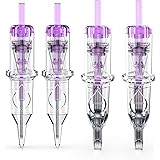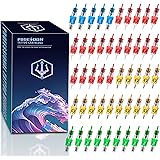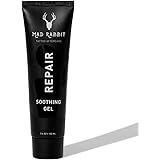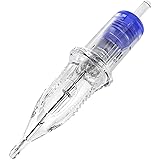It is often observed that tattoos, especially those with delicate fine lines, can unfortunately appear faded, blurry, or even take on a blue or green hue within a year of being inked, despite originally featuring crisp black lines. Such premature degradation can be a source of significant disappointment for many tattoo enthusiasts. As highlighted in the video above, one surprising culprit behind these common issues may be a widely used, yet often misunderstood, aftercare product: Aquaphor.
The core issue with certain products, particularly those with a very thick consistency like Aquaphor, is their composition. When a fresh tattoo is treated with such a dense ointment, a critical barrier can be formed. This barrier, while appearing to moisturize, actually prevents adequate air circulation to the healing skin. The impact of restricted airflow on a delicate new tattoo, especially fine line work, cannot be overstated.
Understanding the Impact of Improper Tattoo Aftercare Products
The healing process for a new tattoo is a complex biological journey, and the choice of aftercare product plays a pivotal role. When the skin is deprived of sufficient air, an environment conducive to complications can be created. Imagine if a fresh wound were constantly encased in a thick, impermeable layer; the skin would likely become soggy and could struggle to form a healthy scab. This undesirable scenario is precisely what may occur with a healing tattoo under an overly occlusive ointment.
The “Moldy, Soggy Scab” Phenomenon
The term “moldy, soggy scab” might sound alarming, but it aptly describes the state of maceration that can develop. Maceration is the softening and breakdown of skin due to prolonged exposure to moisture, often exacerbated by a lack of air. For a healing tattoo, this condition can be particularly detrimental. A healthy scab is typically thin, dry, and provides a protective layer over the damaged skin while allowing for the necessary gaseous exchange. A soggy scab, however, offers less protection and can compromise the integrity of the newly tattooed skin and ink.
When the scab becomes overly saturated and lacks oxygen, it can weaken, potentially pulling out ink as it eventually detaches. This directly contributes to the premature fading or blurriness that is often observed in tattoos, sometimes within just a year of receiving them. The intricate details of fine line tattoos are especially susceptible to this issue, as the delicate lines of ink can be easily disturbed.
Why Petroleum-Based Products May Not Be Ideal for New Tattoos
The primary concern with products like Aquaphor often stems from their high petroleum content. While petroleum jelly is renowned for its occlusive properties—its ability to form a barrier on the skin—this very quality can be counterproductive for a healing tattoo. The tattoo, essentially an open wound, needs to breathe to properly heal and allow the dermal layers to regenerate. An impermeable petroleum barrier can:
-
Suffocate the Wound: Air and oxygen are crucial for the regeneration of skin cells and the prevention of anaerobic bacterial growth.
-
Trap Moisture Excessively: While moisturization is good, excessive trapping of moisture, combined with the body’s natural fluids, leads to maceration.
-
Promote Premature Aging: Over time, if the initial healing is compromised, the tattoo’s clarity and color saturation can suffer, leading to what is sometimes described as “premature aging” of the artwork. This manifests as dullness, blurriness, and color shifts.
For these reasons, a shift in aftercare philosophy has been observed within the tattoo community, moving away from heavy, petroleum-based salves towards lighter, more breathable alternatives.
Choosing Optimal Tattoo Aftercare Products: The Water-Based Advantage
So, what exactly should be used instead? As was suggested, the key lies in selecting products that do not list petroleum as a primary ingredient and are predominantly water-based. Water-based lotions offer several advantages for tattoo aftercare:
-
Breathability: They provide essential moisture without creating an impenetrable seal, allowing the skin to breathe and facilitate proper oxygen exchange.
-
Easier Absorption: Water-based formulas tend to be lighter and are absorbed more readily by the skin, ensuring deep hydration without clogging pores or overly softening the scab.
-
Reduced Risk of Maceration: By allowing the skin to manage its moisture and airflow, the risk of a “soggy scab” is significantly minimized, promoting a healthier, drier healing environment.
Brands like Lubriderm or Aveeno, specifically their fragrance-free and dye-free variants, are often recommended by tattoo artists. However, the most crucial step is always to scrutinize the ingredient list. Look for lotions that emphasize hydration and skin barrier support, but without petroleum jelly or other overly occlusive ingredients at the top of the list. Products formulated specifically for tattoo aftercare, often developed with input from artists and dermatologists, are also excellent choices, as they are designed to balance moisture and breathability.
Beyond Lotions: Comprehensive Tattoo Aftercare Practices
While the choice of moisturizing product is critical, effective tattoo aftercare encompasses a broader set of practices designed to safeguard your new artwork and ensure its longevity. It is widely understood that proper care extends beyond just applying lotion:
-
Gentle Cleaning: The tattoo should be gently washed with an unscented, antibacterial soap, typically two to three times a day, to remove excess ink, plasma, and potential bacteria. Harsh scrubbing or abrasive products must be avoided.
-
Pat Dry, Don’t Rub: After washing, the area should be gently patted dry with a clean paper towel. Rubbing can irritate the skin and disrupt the healing process.
-
Avoid Soaking: Submerging the tattoo in water (baths, pools, hot tubs) for the initial healing period is generally discouraged, as it can introduce bacteria and lead to excessive moisture. Quick showers are typically acceptable.
-
Wear Loose Clothing: Tight clothing can rub against the new tattoo, causing irritation or even pulling off scabs prematurely. Breathable, loose-fitting garments are recommended.
-
Sun Protection: Direct sun exposure can severely damage a new tattoo, causing fading and potentially leading to sunburn and scarring. Keeping the tattoo covered or completely out of the sun is essential during healing. Once healed, a high-SPF sunscreen should always be applied to protect the ink.
-
Resist Picking or Scratching: Itching is a normal part of the healing process, but picking at scabs or scratching the tattoo can lead to ink loss, scarring, and infection.
-
Stay Hydrated and Healthy: General good health, including adequate hydration and nutrition, supports the body’s natural healing capabilities.
Long-Term Preservation of Your Tattoo’s Vibrancy
The initial aftercare phase, typically the first 2-4 weeks, establishes the foundation for how your tattoo will look for years to come. While factors like ink quality, artist skill, and individual skin type play significant roles, the diligence applied during tattoo aftercare is undeniably paramount. By consciously avoiding thick, occlusive products and instead opting for breathable, water-based moisturizers, and adhering to comprehensive aftercare practices, the likelihood of preserving the crispness, vibrancy, and overall integrity of your tattoo is substantially increased. It is through careful consideration and informed choices in tattoo aftercare that the enduring beauty of your body art can be truly safeguarded.











